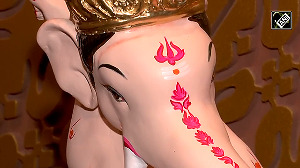Much has been said over the years about HDFC Equity Fund, which turns 12 in December, through our past annual mutual fund rankings and numerous mutual fund stories. At the risk of being repetitive, we tell you why we continue to like it.
Good performance
HEF has consistently been in the top two quartiles on account of its superior risk-adjusted return. At a time when you are told to target the top performers, we are talking about remaining in the top quartiles simply because hitting the number one slot does not guarantee consistent good performance.
A better way is to look at how the scheme does in relation to the others in the market and whether it remains within the top performers or not. On occasion, schemes that perform well might lag the top quartile in a particular year.
That could, however, be the result of the scheme's objectives vis-a-vis stocks that have driven the market up that year. For instance, large-cap oriented stalwarts like HDFC Equity and Franklin India Bluechip showed average performance in 2005 as much of that year's market rally was driven by mid-caps.
In fact, staying ahead of the market is something that HEF does well, it was one of the first to exit the technology sector before it crashed in 2000.
HEF's one-year rolling return is 63.5 per cent, as against the category average of 51.1 per cent and the Sensex's return of 53 per cent. With one of the lowest downside risks, the scheme is No. 5 on RAR. Says fund manager Prashant Jain: "We always believe in investing in growing companies with sustainable businesses, and we like to avoid cyclical stocks."
Large-cap oriented and disciplined approach
HEF invests significantly in large-cap stocks that carry a lower risk compared to mid-cap stocks. Large-cap companies are well-established with a sound, long-term record. They are also less volatile than medium and small companies. This brings stability to your portfolio.
| HDFC Equity Fund |
|
HEF's corpus has grown from |
Unlike many diversified equity funds that tilted towards mid-cap stocks during the past two years, HEF limited its exposure to this segment to just 25 per cent and stayed true to its mandate of being a large-cap oriented equity fund.
It takes discipline on the part of the fund manager and fund house to remain true to the investment objective as stated in the offer document in times when the market is going towards the flavour-of-the-season stocks.
Fund manager
Jain, the only person managing HEF at present, has been at the helm of the scheme for 12 years in a market where fund managers have furiously switched jobs over the last two years.
Jain was chief investment officer of the scheme in Zurich India Mutual Fund, which was bought over by HDFC Mutual Fund in June 2003. Even after the change of fund house, the scheme's strategy has been consistent. The portfolio has just 25 to 30 stocks on an average.
This doesn't worry Jain as it is a large-cap oriented scheme and, therefore, its underlying holdings enjoy comfortable liquidity. Solid performance needs no gimmicks, as the swelling corpus of HEF proves.
It has grown by 235 per cent in the past one-and-a-half years, from Rs 1,101 crore (Rs 11.01 billion) in January 2005 to Rs 3,687 crore (Rs 36.87 billion) in October 2006. Jain does not think it is a hindrance. "Since HEF is a large-cap scheme, we can always go ahead and build up more positions in our existing securities," he says.
Why buy
- Consistent performance
- Stability in fund management. Prashant Jain has been managing the scheme for the past 12 years
- Large-cap oriented portfolio should perform well even in turbulent markets
|
HDFC Equity Fund | |
|
Fund manager: Prashant Jain | |
|
NAV |
Rs 139.4 |
|
Launch date |
24-Dec-94 |
|
Top 5 scrips (%) |
32.9 |
|
Top 10 scrips (%) |
54.9 |
|
Corpus (Rs cr) |
3,687.40 |
|
Entry load (%) |
2.25 |
|
Exit load (%) |
Nil |
|
|
Rs 1 lakh invested in | ||
|
Oct 2005* |
Oct 2003* |
Oct 2001* | |
|
HDFC Equity |
1.58 |
3.18 |
8.49 |
|
Category average |
1.51 |
2.96 |
6.43 |
|
Sensex |
1.64 |
2.64 |
4.34 |
|
* Figures in Rs lakh | |||





